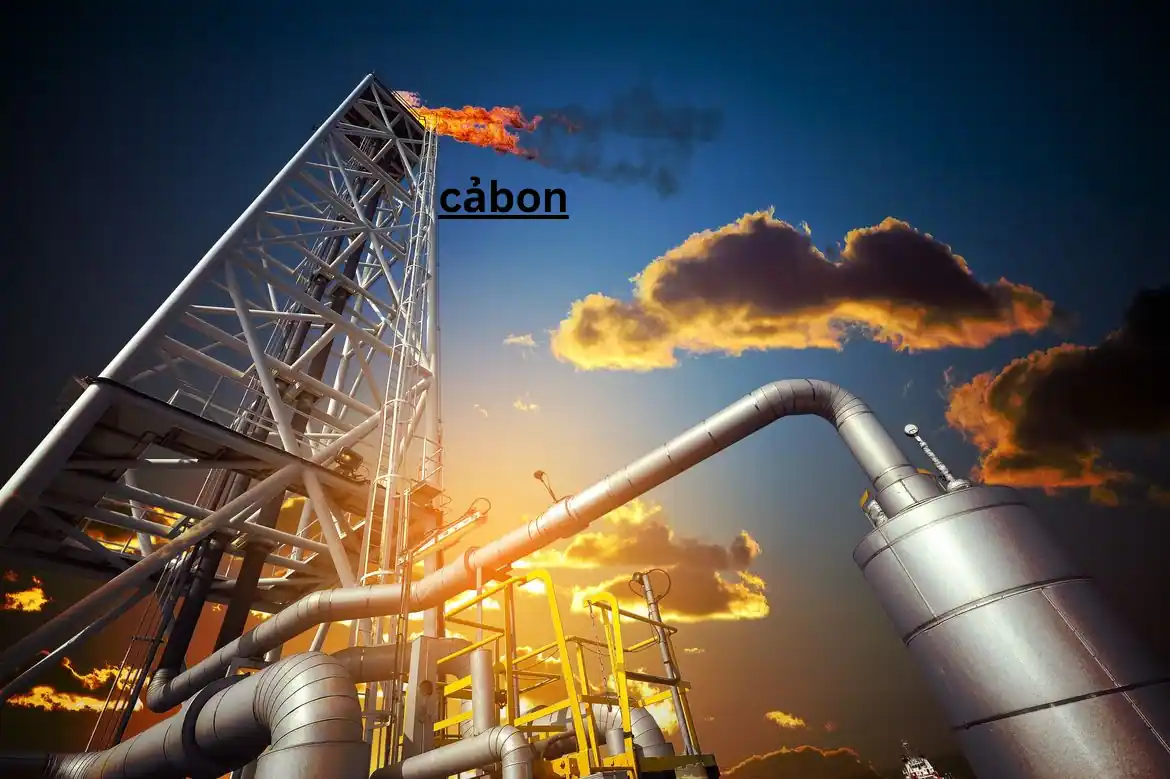What is cảbon? Complete Details
In the realm of contemporary knowledge, you might have encountered mentions of “cảbon” and pondered its significance. Cảbon stands as a naturally existing element indispensable to life as we understand it. Constituted of carbon, hydrogen, and oxygen, cảbon serves as a fundamental component for the formation of amino acids, proteins, and DNA. Its presence is pivotal in the chemical mechanisms sustaining all forms of biological life. Grasping the nature and functions of cảbon offers a profound understanding of both ourselves and the molecular intricacies of the world we inhabit.
Table of Contents
This article aims to present a comprehensive overview of cảbon, covering its discovery, molecular structure, and diverse applications across biochemistry, food, materials, and energy production. Acquiring a more profound understanding of this elemental building block will unveil its significant influence and pervasive presence in both the natural and human-created realms. Despite its simplicity as a molecule, cảbon plays a crucial role in the intricate and wondrous complexity of life itself.
What Is Cảbon? Definition and Overview
Cảbon, in this context, refers to carbon dioxide (CO2) that has undergone capture and storage in substantial underground geological formations such as depleted oil and gas reservoirs or saline aquifers. This method serves as an approach to diminish greenhouse gas emissions and address the challenges of climate change.
The fundamental idea behind cảbon capture and storage (CCS) involves the isolation, compression, transportation, and subsequent injection of CO2 emissions from sources like coal-fired power plants deep underground for extended storage. The CO2 becomes confined within minute pores in the rock, preventing its release into the atmosphere. This process enables the continued utilization of fossil fuels in a carbon-neutral manner.
A CCS system comprises three primary components:
1. Capture: Extracting CO2 from major point sources like power plants and industrial facilities, employing various technologies to separate CO2 from other gases.
2. Transport: Compressing and conveying the captured CO2 to a storage site, typically through pipelines but occasionally utilizing tankers or trucks.
3. Storage: Injecting the CO2 deep underground into geological formations capable of trapping and containing it for an extended duration. Storage locations include depleted oil and gas fields, saline aquifers, and unmineable coal seams.
If implemented on a global scale, CCS holds the potential to decrease CO2 emissions by up to 20% by the year 2050, as projected by the International Energy Agency. Nonetheless, challenges such as high costs, technological prerequisites, policy considerations, and public acceptance pose significant obstacles to the widespread deployment of cảbon capture and storage.
The Many Forms of Cảbon: Diamond, Graphite, Graphene, Etc.
Cảbon manifests in diverse forms, encompassing well-known substances like diamonds and graphite, as well as cutting-edge materials like graphene. Each of these forms exhibits distinctive properties that render them suitable for a wide array of applications.
Diamond
Diamond, the hardest naturally occurring substance, comprises carbon atoms organized in a rigid tetrahedral lattice structure. Its applications include use in cutting tools, abrasives, and jewelry.
Graphite
Graphite features a hexagonal lattice structure, with carbon atoms arranged in sheets. The soft, dark, and flaky nature of graphite results from the weak bonds between these sheets. Graphite serves various purposes, including its use in pencils, lubricants, and nuclear reactors.
Graphene
Graphene, a two-dimensional sheet of carbon atoms bonded in a hexagonal lattice, represents a single layer of graphite. Characterized by flexibility, near transparency, and exceptional conductivity for both electricity and heat, graphene holds promise for various applications. Its potential uses span lightweight electronics, flexible displays, high-efficiency solar cells, and ultrafast transistors.
Fullerenes
Fullerenes are carbon molecules characterized by the arrangement of hexagonal and pentagonal rings, forming spherical or tubular structures. The most recognized fullerene is the C60 buckminsterfullerene, shaped like a soccer ball. Fullerenes hold promise for diverse applications in medicine, catalysis, and nanotechnology.
Carbon Nanotubes
Carbon nanotubes, cylindrical fullerenes formed by rolling graphene sheets into tubes, exhibit remarkable strength despite being lightweight and surpassing steel. Additionally, they function as excellent conductors of electricity. The potential applications of carbon nanotubes span high-performance composites, energy storage, and molecular electronics.
In conclusion, carbon, with its versatility, gives rise to a myriad of structures possessing properties ideal for various applications that hold the potential to enhance and enrich our future lives. Ongoing research on carbon materials remains pivotal, offering the prospect of exciting new discoveries and innovations.
Cảbon’s Unique Properties and Atomic Structure
Cảbon’s Unique Properties and Atomic Structure
Carbon exhibits several distinctive properties that enable versatile chemical bonding. With four valence electrons in its outer shell, carbon forms diverse and stable covalent bonds with various elements, facilitating the creation of extended chains and ring structures.
Carbon atoms can engage in single, double, and triple covalent bonds with each other. The capability to form double and triple bonds leads to the generation of alkenes and alkynes. Furthermore, carbon can establish covalent bonds not only with other carbon atoms but also with hydrogen, oxygen, nitrogen, phosphorus, sulfur, and the halogens. These versatile bonding characteristics empower carbon to generate an extensive array of large and intricate molecules.
In its natural state, carbon has two stable isotopes: carbon-12 (98.89% abundance) and carbon-13 (1.11% abundance). Carbon-14, a radioactive isotope with a half-life of approximately 5,700 years, is frequently utilized in radiocarbon dating to determine the age of objects.
The carbon atom consists of 6 protons and 6 neutrons in its nucleus, with an electronic configuration of 1s² 2s² 2p². In its ground state, carbon possesses two electrons in the 1s orbital, two in the 2s orbital, and two in the 2p orbital. During covalent bond formation, carbon promotes one 2s electron to the vacant 2p orbital, resulting in four unpaired valence electrons in its outer shell, available for sharing with other atoms.
Critical to all known life on Earth, carbon plays an essential role in complex organic molecules, often combining with hydrogen, oxygen, and nitrogen. The ability of carbon to establish diverse and stable covalent bonds is pivotal for the creation of millions of distinct organic compounds integral to biochemical processes.
The Role of Cảbon in Organic Chemistry and Biochemistry
Carbon plays a pivotal role in the realms of organic chemistry and biochemistry, serving as the fundamental basis for all known life on Earth and contributing to an unparalleled variety of compounds.
The distinctive properties of carbon arise from its possession of four valence electrons in the outer shell, fostering diverse bonds with elements such as hydrogen, oxygen, and nitrogen. With the capacity to bond with up to four other atoms, carbon facilitates the creation of extensive chain molecules and intricate structures.
Carbon-based compounds are indispensable components of organic matter and living organisms, falling into four main groups:
1. Carbohydrates: Functioning as sources of energy and structural components, examples include sugars, starch, and cellulose.
2. Lipids: Serving as energy stores, insulation, and integral parts of cellular membranes, examples encompass fats, oils, and waxes.
3. Proteins: Playing crucial roles in structure, function, and regulation, proteins are composed of amino acids.
4. Nucleic acids: Responsible for storing and transmitting genetic information, with DNA and RNA as the primary types.
These organic molecules constitute the fundamental building blocks of all living entities, undergoing synthesis and breakdown within cells to provide essential fuel and raw materials for organismal function.
In the domain of biochemistry, carbon assumes a central role in the structure and function of biological molecules. The carbon skeletons of organic compounds serve as anchor points for functional groups, determining the distinct properties of each molecule. For instance, variations in the bonding of carbon atoms in amino acids like alanine and glycine result in different functional groups, despite both containing carbon, hydrogen, oxygen, and nitrogen atoms.
Carbon’s remarkable ability to form diverse and intricate molecules underpins the vast array of compounds found in living organisms. Its essential role in organic chemistry and biochemistry stands as a cornerstone upon which all life is constructed.
Where Cảbon Comes From: Natural Sources and Synthesis
Activated carbon, commonly referred to as cảbon, originates from carbon-rich natural sources, with coal and wood being the predominant ones. Hardwoods, such as coconut shells and wood chips, are specifically favored for this purpose. These materials undergo a high-temperature processing technique called pyrolysis, resulting in the production of pure carbon.
Coal and Peat
Coal and peat, sedimentary organic materials rich in carbon, can undergo pyrolysis to transform into activated carbon. Particularly, “brown coal,” classified as low-grade coal, is advantageous due to its increased pore density, providing a larger surface area. Peat, composed of partially decomposed vegetation, shares the same capability. The outcome of this process is activated carbon characterized by a highly porous structure.
Wood and Coconut Shells
Certain hardwoods, such as oak, hickory, and maple, along with coconut shells, are popular choices as precursors for manufacturing activated carbon due to their dense and robust fibers. Hardwoods like oak, hickory, and maple yield high-quality activated carbon, while coconut shells are valued for their sustainability and the creation of a highly porous end product. The process involves grinding down coconut shells and then subjecting them to heat, resulting in small granules of pure carbon with a vast surface area.
Additionally, activated carbon can be synthetically produced through chemical synthesis using materials like coal tars, ethylene dichloride, and phosphoric acid. Chemical treatment of these precursors opens up pores, and subsequent heating creates activated carbon. While synthetically derived activated carbon tends to exhibit more consistent properties, naturally sourced alternatives are considered more sustainable and environmentally friendly.
Whether obtained from natural or synthetic sources, the key to producing high-quality activated carbon lies in maximizing surface area through an extensive network of pores. The source material undergoes a transformation into a matrix of nearly pure elemental carbon with pores of varying sizes, resulting in an extensive surface area available for adsorption and filtration. The effectiveness of the final activated carbon product is contingent on proper activation and processing to develop an optimal pore structure and surface area.
Uses of Cảbon in Materials Science and Nanotechnology
Carbon stands out as one of nature’s most versatile elements, boasting numerous applications in materials science and nanotechnology. Its capacity to create varied molecular structures leads to a diverse array of physical properties, making it valuable for material design and engineering.
Some primary applications of carbon in materials and nanotechnology encompass:
Reinforcement
Carbon fibers and nanotubes play a crucial role in strengthening materials such as polymers, ceramics, and metals. Their inclusion enhances durability and strength while simultaneously reducing overall weight. These reinforced materials, often referred to as composites, are widely utilized in various applications, including aircraft, automobiles, sporting goods, and infrastructure.
Conductivity
Carbon materials such as graphite and nanotubes exhibit high conductivity, making them valuable in applications involving electrodes, sensors, and electronics. The conductivity of these materials can be customized according to their molecular structure, allowing for their use in diverse applications. This includes scenarios demanding high conductivity, as seen in batteries, or variable conductivity, as required for components like thermostats.
Adsorption
Activated carbon boasts an exceptionally large surface area, featuring porous spaces capable of adsorbing gases and liquids. Its applications extend to filtration systems, encompassing water purification, air purification, and industrial pollution control. Additionally, its adsorption capabilities make it valuable in storage systems for gases like hydrogen.
Catalysis
Carbon materials serve as a foundation for catalytic nanoparticles that enable chemical reactions. Vehicles employ catalytic converters utilizing carbon to diminish emissions, while ongoing exploration delves into carbon’s potential for applications in renewable energy technologies like fuel cells and artificial photosynthesis.
Biomedical applications
Carbon’s biocompatibility makes it valuable for various medical applications, including medical implants, drug delivery, biosensors, and medical devices. The potential of graphene and nanotubes extends to areas such as tissue engineering, bioimaging, and precision medicine. However, further research is imperative to comprehensively understand the biological and toxicological impacts before considering widespread medical use.
In essence, carbon has emerged as indispensable for driving technological innovation and elevating global living standards. Ongoing research continues to broaden its scope for an even more extensive range of applications that contribute to societal well-being. With responsible development, carbon materials have the potential to support the realization of more sustainable energy systems, transportation, infrastructure, and healthcare solutions.
Cảbon Emissions and Climate Change Impacts
Carbon emissions involve the discharge of carbon dioxide and other greenhouse gases into the atmosphere. Human activities, such as burning fossil fuels, deforestation, and industrialization, contribute to the rising concentration of carbon dioxide in the atmosphere. This heightened concentration leads to increased heat retention in the lower atmosphere, causing the planet to experience overall warming, commonly referred to as global warming.
Climate Change Impacts
The effects of climate change are already evident globally, manifesting in rising sea levels, more powerful storms, increasingly severe weather events, and escalating wildfires. If carbon emissions persist in their upward trajectory, the repercussions will be catastrophic.
Anticipated devastating consequences of climate change in the coming decades include:
– Escalating sea levels leading to coastal flooding and the displacement of millions, with low-lying areas and islands particularly at risk.
– Altered weather patterns resulting in more frequent or intense extreme events such as hurricanes, heatwaves, droughts, and heavy rainfall. These occurrences can result in loss of life, agricultural damage, and property destruction.
– Threats to food security and water supply due to changes in rainfall patterns and increased drought frequency, making crop cultivation and livestock raising challenging. Glacier melt also impacts freshwater resources for billions.
– Irreversible loss of biodiversity as numerous species struggle to adapt swiftly to the rapid pace of climate change, affecting ecosystems like coral reefs, arctic wildlife, and various plant species.
– Intensification of wildfires, releasing more carbon dioxide and particulate matter into the atmosphere. Prolonged, intense wildfire seasons render many areas uninhabitable, posing threats to lives and homes.
– Proliferation of diseases facilitated by warmer weather, potentially increasing the prevalence of diseases like malaria and dengue fever.
– Economic repercussions including expenses from extreme weather-related damage, healthcare costs, and productivity losses, with the poorest nations facing the harshest economic impacts.
Mitigating the worst consequences of climate change and ensuring a sustainable world for future generations necessitate a reduction in carbon emissions and a shift to renewable energy. Urgent action is imperative from governments, organizations, and individuals to make sustainable choices and adopt eco-friendly practices, collectively contributing to a positive impact.
Cảbon Capture and Sequestration Methods
A technique employed to address climate change is carbon capture and sequestration (CCS). This process entails capturing carbon dioxide (CO2) emissions at their origin and securely storing them to prevent their release into the atmosphere. Various methods exist for capturing and sequestering CO2:
Geological Sequestration
The prevailing approach involves injecting carbon dioxide (CO2) into deep geological formations, such as depleted oil and gas reservoirs or saline aquifers. This process involves compressing CO2 into a liquid, transporting it to the injection site, and then pumping it into porous rock formations located hundreds of meters below the surface. Subsequently, the CO2 disperses within the formation, with some dissolving in fluids. Over time, mineral reactions occur, converting the CO2 into solid carbonate minerals, thereby permanently sequestering the carbon dioxide. Vigilant monitoring is essential to ensure the CO2 remains securely trapped underground.
Ocean Sequestration
Injecting CO2 into deep ocean waters is another approach, wherein the gas dissolves and integrates with seawater. Nevertheless, this technique is currently in the experimental stage, and there are environmental apprehensions regarding its potential impact on marine ecosystems. Thorough monitoring would be essential to assess and understand the effects of this method.
Mineral Carbonation
The process entails the reaction of CO2 with metal oxides found in solid materials like mining waste, resulting in the creation of stable carbonate minerals that sequester CO2 in a solid state. These carbonate minerals can be stored or utilized in various applications, such as in the production of building materials. However, the method demands substantial quantities of silicate rocks and generates additional secondary waste products. Consequently, additional research is necessary to upscale the process.
Bioenergy with Carbon Capture and Storage (BECCS)
BECCS (Bioenergy with Carbon Capture and Storage) entails capturing CO2 emissions from the combustion of bioenergy or biomass and subsequently storing the captured CO2 underground. This process results in negative emissions, as the plant materials absorb CO2 during their growth. However, the widespread implementation of BECCS would necessitate expansive land areas for biomass cultivation, potentially competing with food production.
In summary, while CCS (Carbon Capture and Storage) holds promise in the context of climate change mitigation, all these methods require additional research, development, and demonstration to comprehensively understand the associated costs, benefits, and risks before considering large-scale deployment. Continuous innovation in CCS could play a crucial role in achieving net-zero emissions.
Conclusion
The concept of carbon is intricate, encompassing various aspects that determine its properties and behaviors. Despite being a field still in the early stages of scientific exploration, the study of carbon and its involvement in diverse biological and chemical processes holds the promise of uncovering numerous insights and applications that can enhance our lives.
However, as with any potent discovery, there are accompanying risks, and it is essential to consider the ethical implications of applying our knowledge of carbon. By approaching our work with thoughtfulness and intentionality, carbon could emerge as a revolutionary discovery with the potential to improve life as we know it. Yet, it is crucial to remain vigilant and govern its progress wisely, recognizing that the unwritten future is in our hands, and responsible shaping is imperative.






